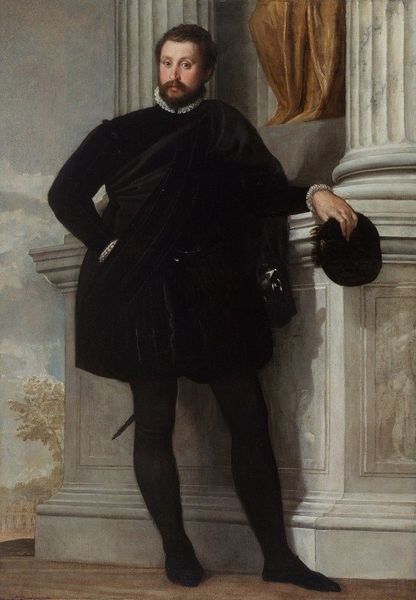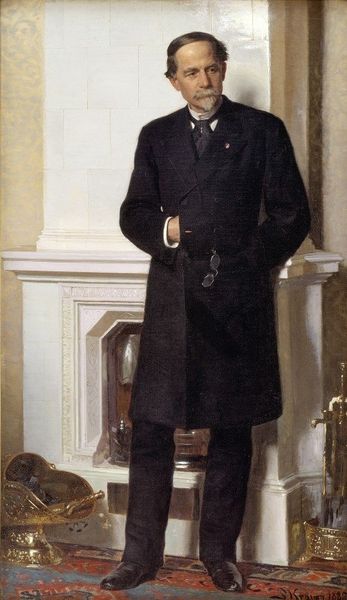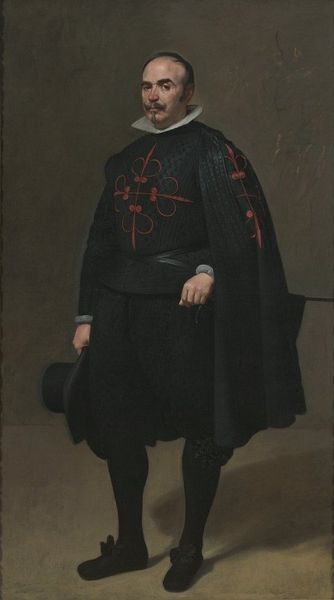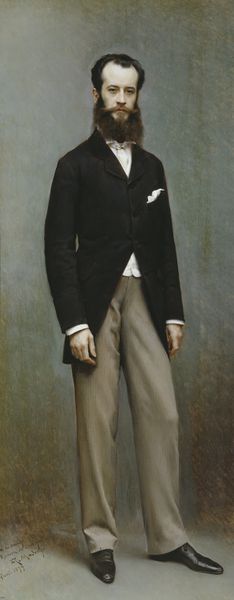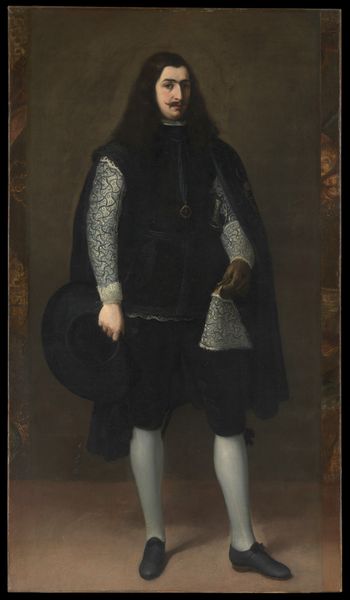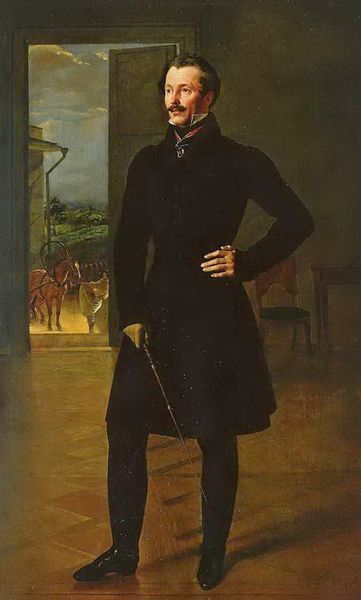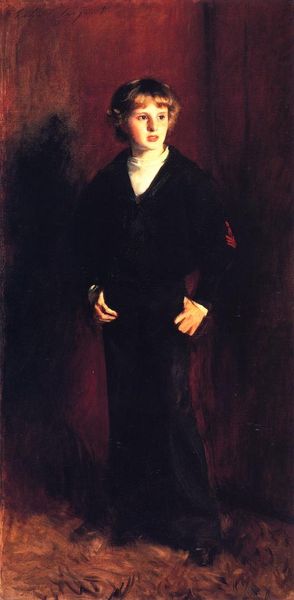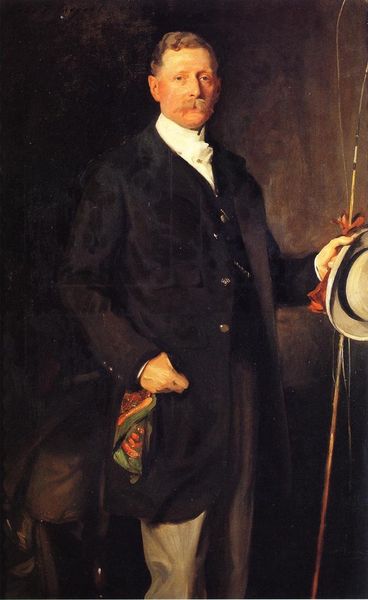
painting
#
portrait
#
painting
#
history-painting
#
italian-renaissance
#
realism
Copyright: Public domain
Curator: Looking at this artwork by Sofonisba Anguissola, created around 1557, what's your immediate reaction? This is a portrait of Massimiliano Stampa; the painting currently resides at the Walters Art Museum in Baltimore. Editor: Intriguing. I’m struck by the somber stillness of the piece. The predominantly dark clothing against the plain background creates a muted palette, and yet, there's something deeply unsettling in the subject's gaze. What sociopolitical constructs was Anguissola engaging with in her portraiture? Curator: Anguissola was, as we know, a very rare thing: a woman gaining international recognition as a painter in the 16th century. Placing this work in that context makes us consider the ways in which elite gender norms shaped artistic practices, but more generally, who had the power to be portrayed at all. Consider the dog here – often a symbol of loyalty and fidelity – seemingly asleep at Massimiliano's feet, reinforcing a particular narrative of aristocratic virtue, while perhaps alluding to colonial conquests. Editor: The dog’s sleep evokes something else though: indolence. Aren’t animals, and our representations of them, more generally culturally loaded signifiers? How much weight do you give to the presence of that column too, perhaps signaling not just status and lineage but also... instability? Curator: The column base seems awkwardly placed, you're right! And in this work it surely represents a disruption of conventional portraiture, a subversive challenge. But looking closer, it serves to place him within a specific architectural and social landscape. His clothing signals affluence and power. Yet there's a tension. He’s clearly privileged, but that expression… he appears burdened rather than triumphant. Editor: Exactly! We need to contextualize that "burden" - how does this image either confirm or subtly subvert existing hierarchies of power and class? It invites us to unpack the hidden complexities behind aristocratic portraiture, beyond a simple, honorific representation. Curator: So it pushes beyond an objective representation of a wealthy boy, forcing us to question what’s left unsaid about power, identity, and perhaps the performative nature of masculinity in the Renaissance. Editor: Agreed. The piece stays with you, provoking difficult questions that extend far beyond simple aesthetics. I'll never look at such formal aristocratic portraits in quite the same way.
Comments
No comments
Be the first to comment and join the conversation on the ultimate creative platform.
